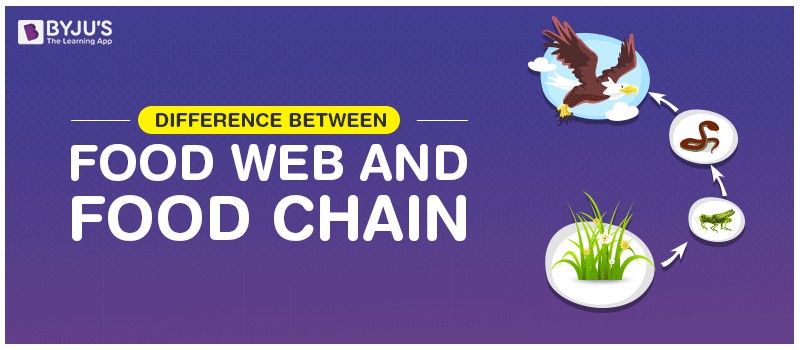Understanding the intricate relationships between organisms in an ecosystem is crucial to grasping the complexities of life on Earth. Two fundamental concepts that help us visualize these relationships are food chains and food webs. While both depict the flow of energy and nutrients, they differ significantly in their structure and complexity.
The essential concept of a food chain: A food chain illustrates the linear transfer of energy and nutrients from one organism to another. Each organism occupies a specific trophic level. For example, primary producers like plants reside at trophic level 1, while apex predators are typically found at trophic levels 4 or 5.
In contrast, a food web represents a complex network of interconnected food chains, illustrating the diverse feeding relationships between various organisms within an ecosystem.
Key Distinctions Between Food Chain and Food Web
The primary distinctions between food chains and food webs are highlighted in the table below:
| Feature | Food Chain | Food Web |
|---|---|---|
| Structure | A single, linear pathway showing energy flow. | A complex network of interconnected pathways showing energy flow. |
| Feeding Habits | An organism at a higher trophic level consumes one specific organism from a lower trophic level. | An organism at a higher trophic level can feed on multiple organisms from lower trophic levels. |
| Adaptability & Competitiveness | Limited impact on the adaptability and competitiveness of organisms. | Enhances the adaptability and competitiveness of organisms. |
 Difference Between Food Chain And Food Web
Difference Between Food Chain And Food Web
Alt text: Comparison diagram illustrating the linear flow of a food chain versus the interconnected network of a food web, highlighting the complexity of energy transfer in ecosystems.
Expanding on the Differences: Complexity and Stability
Food chains offer a simplified view of energy transfer, representing a direct, linear pathway. They are useful for understanding basic trophic levels and energy flow but often fail to capture the true complexity of ecological interactions. In reality, most organisms consume a variety of food sources and are, in turn, consumed by multiple predators.
Food webs, on the other hand, provide a more realistic and comprehensive depiction of ecosystem dynamics. By illustrating the interconnectedness of multiple food chains, food webs reveal the intricate feeding relationships that exist within a community. This complexity contributes to the stability of the ecosystem. If one food source becomes scarce, organisms can switch to alternative prey, preventing a collapse of the entire system.
Example Scenarios
Consider a simple food chain: Grass → Grasshopper → Frog → Snake → Hawk. This chain illustrates a direct flow of energy from the grass to the hawk. However, in a food web, the hawk might also feed on mice, squirrels, or other birds. The snake might eat other amphibians or reptiles, and the grasshopper might consume various types of plants. This interconnectedness creates a more stable and resilient ecosystem.
Another example: Imagine a forest ecosystem. A food chain might show: Leaves → Caterpillar → Bird → Fox. However, a food web would depict the caterpillar also eating other plants, the bird eating various insects and seeds, and the fox preying on rodents, rabbits, and even berries.
The Role of Decomposers
While both food chains and food webs often focus on producers and consumers, it’s vital to remember the crucial role of decomposers (bacteria, fungi, etc.). Decomposers break down dead organisms and waste, releasing nutrients back into the ecosystem. These nutrients are then used by the producers, completing the cycle of energy and nutrient flow. Decomposers are essential components within food webs, connecting all trophic levels.
Food Chain vs. Food Web: A Summary
In essence, a food chain is a simplified linear pathway illustrating the flow of energy and nutrients through trophic levels. A food web is a multifaceted network of interconnected food chains that accurately represents the diverse feeding relationships within an ecosystem. Food webs demonstrate a higher degree of realism and complexity when compared to food chains. They showcase the interconnectedness of different organisms and contribute to the overall stability of an ecosystem. Understanding the nuances between food chains and food webs is essential for comprehending the dynamics of ecological systems.